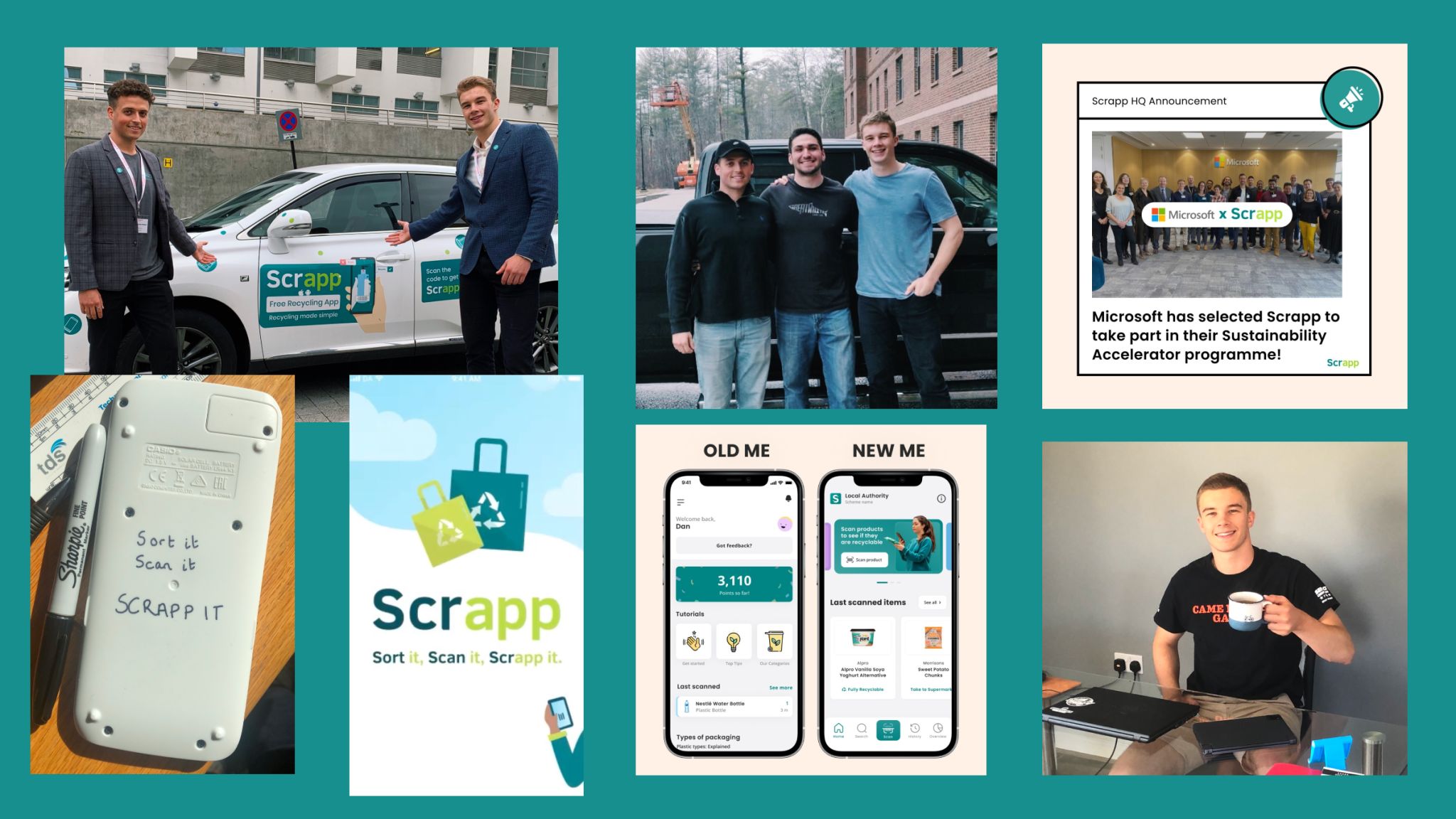Feb 29, 2024

Is your website failing to convert? You're not alone — the majority of website visitors leave without taking action. But what if you could unlock your website's true potential and turn those lost visitors into loyal customers?
In my experience, most businesses are missing the same 3 key elements from their website’s strategy, which makes all the difference. But by implementing these simple steps, you can boost your sales, generate more leads, and leave your competitors in the dust.
What is a website strategy, and why is it important?
A website strategy is a plan that outlines how to make your website appealing to your target audience and achieve your business goals. Good website strategies often include elements like user experience (UX), content planning, SEO, and analytics.
Businesses that invest in a well-defined website strategy are proven to benefit from a 400% performance improvement over average websites.
How to create a high-performing website strategy
Set SMART goals to track performance.
Focus on your audience, not you.
Develop a robust content strategy.
How to set goals for your website
Want to turn your website into a highly-tuned marketing machine? The first step is setting clear and measurable goals. Forget "increased website traffic" or "time spent on site." These are 'vanity metrics' that sound good but won't directly contribute to your bottom line.
Instead, focus on a North Star Goal: a single metric that reflects your top business priority. It could be increasing sales, generating leads, or fostering deeper customer relationships. Choose a goal that, when achieved, will truly benefit your entire team. For maximum impact, your chosen metrics should be SMART: Specific, Measurable, Achievable, Relevant, and Time-bound. For example:
Professional services firm: Double the number of qualified leads generated by Q2.
Blog: Get 2,000 new email subscribers within 3 months.
E-commerce store: Increase online purchases each month by 15%.
How to track your website’s performance with analytics tools
With modern analytics tools, we’re able to track pretty much everything under the sun. But resist the urge. Stick to your North Star Goal and use strategic analytics to pinpoint what truly moves the needle. Here's a practical goal-setting template to help you identify your website strategy’s top priorities.
Website goal setting template
Envision: Imagine the ideal scenario a year after your website launch. How has it made a difference to your business?
Identify: Write down 2-3 key metrics that represent the most significant positive impact.
Strategise: With these metrics in mind, develop a concrete plan to achieve your desired outcomes. Don't worry about tracking everything – focus on what matters most.

Data.Goat is a Free Webflow Google Analytics Plugin from Uros Mikic and the team at FlowNinja.
My top 3 analytics tools at the moment
DataGoat: Free — for Webflow users who trying to simplify their Google Analytics (GA4) data.
Humblytics: Freemium — Simple, privacy-friendly analytics tool designed for Webflow.
SimpleAnalytics: Paid — EU-based and hosted alternative to GA4.
"Trying to ramp up your website conversions without proper tracking is much like playing sports in the dark. You might get lucky to get that extra 1% from the copy or design changes you've made, but you can never be sure which changes had positive or negative effects on your website."
Uros Mikic, Founder and CEO @ Flow Ninja
How to follow a user-centered approach to your website’s strategy
Imagine your website as your virtual storefront. Would you attract customers with cluttered shelves, confusing signage, and a salesperson talking only about themselves? Of course not! That's why user-centric design is crucial for the success of your website.
Simply put, user-centric design means crafting your website around your visitors' needs, wants, and expectations. It's not about forcing what you want onto them, but rather understanding their goals and making it easy for them to achieve them. Here are two key principles to remember:
1. It's not about you, it's about your customers
Ditch the "me, me, me" approach. New visitors don't care about your company's history or self-promotion. They're looking for solutions to their problems.
Speak their language and focus on the benefits you offer. Use headings to talk about how your product or service can improve their lives, not just what it features.
Remember, you're not selling a product. You're selling a better version of themselves. Connect with their aspirations and show them how you can help them achieve them.
2. Don't make your visitors think too much
Minimise cognitive load by making everything intuitive and easy to understand.
Clear navigation, concise content, and logical workflows are key. Don't make users jump through hoops to find what they need.
Optimise user journeys for each page's specific goal. Eliminate distractions and focus on driving the desired action.
Example of a successful website strategy
In 2022, Airbnb demonstrated user-centric design in action. Instead of a basic search bar, they recognised that users often have a general idea of the type of experience they want (e.g., beach vacation, romantic getaway). So they introduced a categorised scroll feature on their website and app that showcased different types of stays — making searching and booking effortless. This simple change increased user engagement because they aligned their design decisions with their audience’s ambitions.
Remember, user-centric design is an ongoing process. Test, iterate, and gather feedback to constantly refine your website strategy based on your users' needs.

Comparison of Airbnb search redesign - example of user-centric design.
How to develop a good website content strategy
A successful website isn’t complete without a solid content strategy. To attract and engage your audience, you need to understand what they're searching for, when, and how. Here's how to unleash the power of data-driven content:
1. Get the basics right
Keyword research: Uncover the keywords your target audience uses to search. What questions do they have? What problems are they trying to solve?
Competitive analysis: See what your competitors are doing well and identify any gaps you can fill. Learn from their successes and avoid their mistakes.
Search intent: Understand why users are searching for specific terms. Are they researching, comparing, or ready to buy? Tailor your content accordingly.
Remember: 96.55% of pages receive no traffic, so a few high-performing pages are worth more than dozens of mediocre ones. Focus on creating content that truly resonates with your audience and drives valuable actions.
2. Quality over quantity
While consistency is key, don't fall into the trap of churning out AI-generated fluff. Search engines favour original, informative content that offers unique value and fresh perspectives.
Match search intent: Create content that directly addresses what users are looking for, whether it's informative articles, persuasive product descriptions, or engaging tutorials.
Stand out with quality: Invest in crafting thoughtful, well-researched content that demonstrates your expertise and sets you apart from the competition.
“Just like in business you do market research to identify your customers first, then build a product for them. You should follow the same approach for websites - you find what users are looking for first, then build your site to satisfy those needs for them.”
Search Historian: SEO, Content Strategist and CMS Architect @ Webflow SEO Agency, Content Nest
Example of a good content strategy in action
Let’s compare two wearable technology companies focused on employee safety.
The first company uses a short brand-centric headline, missing up on a key opportunity to rank highly for SEO and speak directly to potential customers.

Brand-centric headline example.
The second company, however, chooses words that matter to their audience, like “panic buttons,” “safety devices,” and “protect your staff.” This not only makes their content more relatable but also boosts their search engine ranking. It’s a clear example of how using the right language can make a big difference in reaching and resonating with your target audience.

User-centric headline example.
What kind of website would you like?
Remember, your website is a powerful tool, but it needs the right strategy to reach its full potential. By embracing clear goals, user-centric design, and data-driven content, you can transform it into a marketing machine that attracts, engages, and converts visitors into loyal customers.
My advice? Don’t settle for "good enough". Spend the time now to save a headache later and build a website that truly works for your business.
Support
This article was inspired by Search Historian on this episode of Visual Div podcast and his brilliant presentation on Webflow SEO at Webflow Conf last year.
When I reached out to him, he kindly offered this great advice...
“Always start any website build planning with SEO experts that specialize in search intent based money pages - so can research and build your-business-specific CMS architecture, then move into development (make sure it works) and only finish it up with design (make sure it looks cool)."
I’d also like to extend my gratitude to these Webflow legends: Uros Mikic, Matt and Jack for their invaluable feedback and input too.
Feel free to drop me a line if you have any questions.



